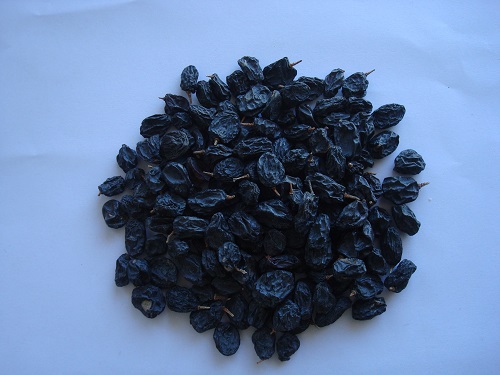Blackcurrant

The blackcurrant (scientific name Ribes
nigrum) is a woody shrub in the family Grossulariaceae grown for its piquant
berries. It is native to temperate parts of central and northern Europe and
northern Asia where it prefers damp fertile soils and is widely cultivated both
commercially and domestically. It is winter hardy but cold weather at flowering
time during the spring reduces the size of the crop. Bunches of small, glossy
black fruit develop along the stems in the summer and can be harvested by hand
or by machine. The fruit is rich in vitamin C, various other nutrients,
phytochemicals and antioxidants. Blackcurrants can be eaten raw but are usually
cooked in a variety of sweet or savoury dishes. They are used to make jams,
jellies and syrups and are grown commercially for the juice market. The fruit
is also used in the preparation of alcoholic beverages and both fruit and
foliage have uses in traditional medicine and the preparation of dyes.
As a crop, the blackcurrant suffers from
several pests and diseases. The most serious disease is reversion, caused by a
virus transmitted by the blackcurrant gall mite. Another is white pine blister
rust which alternates between two unrelated hosts, one in the Ribes genus
(blackcurrant included) and the other a White pine. This fungus caused damage
to forests when the fruit was first introduced into North America, where the
native white pines have no genetic resistance to the disease. As a result, the
blackcurrant has for most of the 20th century been subject to restrictions in
parts of the United States as a disease vector. The effectiveness of these
restrictions is questionable, since other Ribes species also host the disease
and are native to North America.
Breeding is being undertaken in Europe and
New Zealand to produce fruit with better eating qualities and bushes with
greater hardiness and disease resistance.